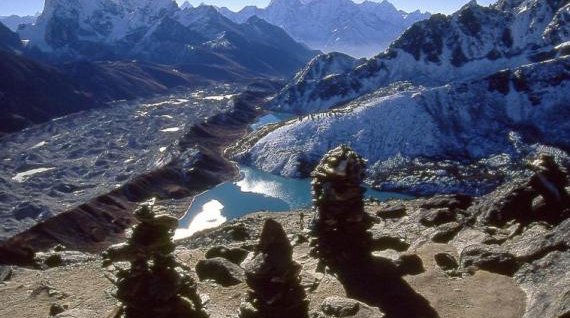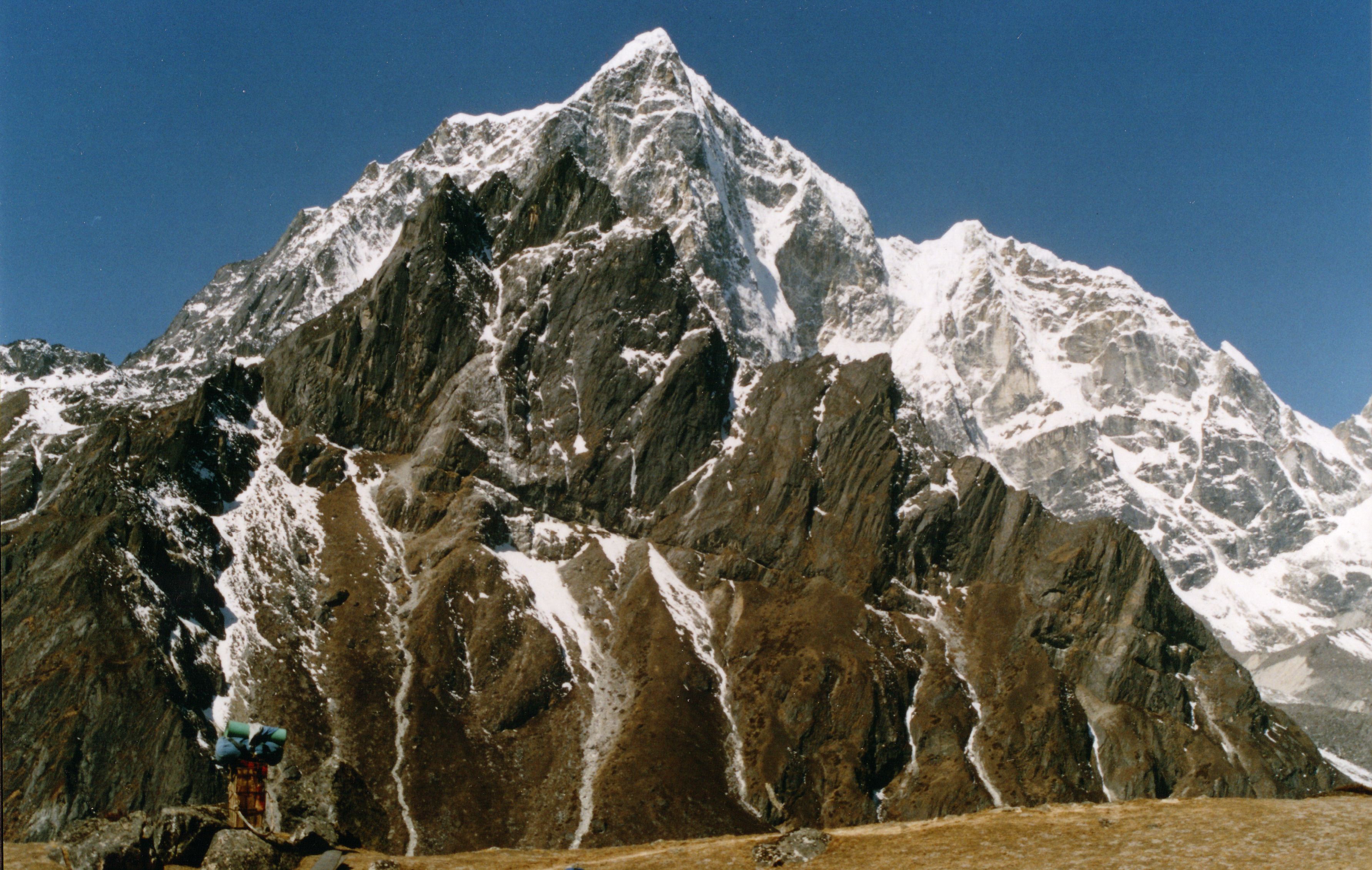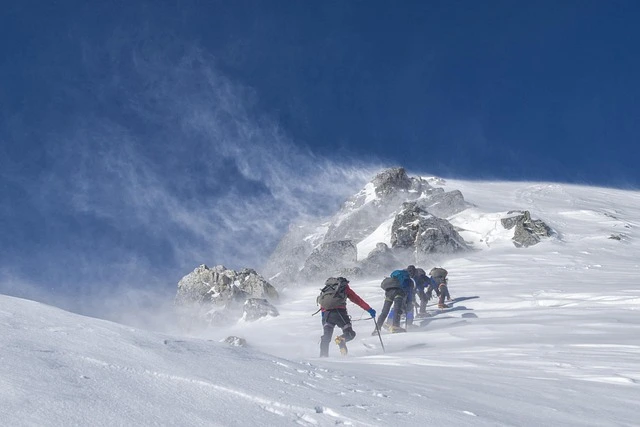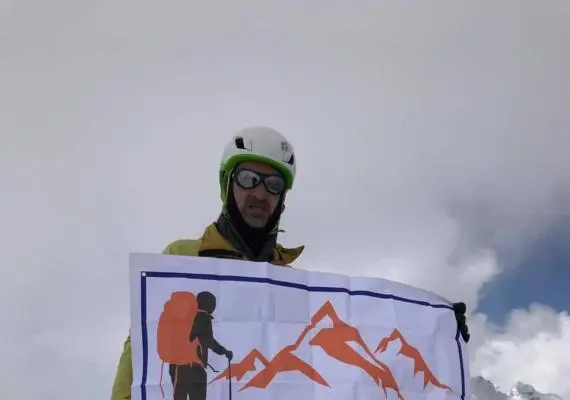Nepal, a land of unparalleled natural beauty and rich cultural heritage, offers a myriad of trekking experiences that cater to every adventurer's soul. Among these, the Langtang Gosaikunda Trek stands out as a truly captivating journey. This package-style article will immerse you in the heart of this Himalayan odyssey, providing all the essential information to inspire and prepare you for an unforgettable adventure that combines stunning mountain vistas, sacred alpine lakes, and deep cultural immersion.
The Langtang Gosaikunda Trek is a remarkable blend of the well-known Langtang Valley trek and the spiritual pilgrimage to Gosaikunda Lake trek. It’s an adventure that promises to be less crowded than some of Nepal’s more famous routes, offering a more intimate connection with nature and the local way of life. From verdant rhododendron forest trek trails to the towering peaks of the Langtang Himal, and from vibrant Tamang villages to ancient Buddhist monasteries Langtang, this trek is a kaleidoscope of experiences.
Trip Highlights:
- Diverse Landscapes: Traverse through lush subtropical forests, alpine meadows, and barren high-altitude terrains.
- Glacial Beauty: Witness the raw power and serene beauty of glaciers as you ascend into the Langtang Valley.
- Sacred Gosaikunda Lake: Explore the revered, turquoise waters of Gosaikunda and its surrounding lakes, believed to be created by Lord Shiva.
- Lauribina Pass Crossing: Conquer the challenging but rewarding Lauribina Pass (4,610m) for panoramic views.
- Cultural Immersion: Discover the unique traditions and warm hospitality of the Tamang people in their picturesque villages.
- Kyanjin Gompa Cheese Factory: Visit the famous Kyanjin Gompa and sample fresh yak cheese at its local factory.
- Tserko Ri Panorama: Ascend to Tserko Ri (around 4,984m) for breathtaking 360-degree views of the Langtang range.
- Wildlife Encounters: Keep an eye out for diverse wildlife Langtang National Park, including the elusive red panda.
Short 15-Day Itinerary:
This simplified itinerary provides a typical overview of the 15-day Langtang Gosaikunda Trek. Flexibility is often possible, and some itineraries may vary slightly in duration or specific overnight stops.
Day 1: Arrival in Kathmandu - Airport transfer and hotel check-in
Day 2: Drive Kathmandu to Syabru Bensi (1,550m) - 7-8 hours scenic drive
Day 3: Trek Syabru Bensi to Lama Hotel (2,450m) - 6-7 hours, 10.9 km
Day 4: Trek Lama Hotel to Langtang Village (3,430m) - 4-5 hours, 14.8 km
Day 5: Trek to Kyanjin Gompa (3,870m) - 2-3 hours, 6.8 km
Day 6: Acclimatization day at Kyanjin Gompa - Explore surrounding peaks and valleys
Day 7: Trek back to Lama Hotel - 6 hours, 21.6 km descent
Day 8: Trek Lama Hotel to Big Syabru Bensi (2,230m) - 6-7 hours, 13.1 km
Day 9: Trek Big Syabru Bensi to Sing Gompa (3,330m) - 3-4 hours, 6.8 km
Day 10: Trek Sing Gompa to Gosaikunda Lake (4,460m) - 4-6 hours, 11.2 km
Day 11: Trek Gosaikunda to Sing Gompa/Chandan Bari (3,250m) - 4.5 hours
Day 12: Trek Sing Gompa to Dhunche - 6 hours
Day 13: Drive Dhunche to Kathmandu - 7-8 hours
Day 14: Rest day in Kathmandu - Shopping and farewell dinner
Day 15: Final departure - Airport transfer
Permits & Costs: Navigating the Essentials
Embarking on the Langtang Gosaikunda Trek requires specific permits to ensure your safety and contribute to the conservation efforts of the region. Understanding these requirements and their associated costs is crucial for a smooth and hassle-free journey.
TIMS Card
The Trekkers' Information Management System (TIMS) card is mandatory for all foreign trekkers in Nepal. It helps the government track trekkers for safety purposes, especially in case of emergencies or natural disasters. As of recent regulations, solo trekking is generally discouraged in many parts of Nepal, and the TIMS card is typically obtained through a registered trekking agency. The cost for foreign nationals is approximately NPR 2,000 (around USD 15-20), while SAARC nationals pay less.
Langtang National Park Entry Permit
This permit grants you access to the beautiful Langtang National Park, a protected area spanning over 1,710 sq. km. The park is home to diverse flora and fauna, including rare wildlife species, and encompasses the stunning landscapes you'll be traversing. You can obtain this permit at various entry points like Dhunche or Syabrubesi, or in Kathmandu. The cost for foreign nationals is NPR 3,000 (around USD 25-30). SAARC citizens pay NPR 1,500.
Shivapuri-Nagarjun National Park Permit (Optional)
If your trek concludes via Sundarijal (a common exit point for the Gosaikunda and Helambu sections), you will also need an entry permit for Shivapuri-Nagarjun National Park. This permit costs NPR 1,000 for foreigners.
Total Permit Cost Estimate: For foreign nationals undertaking the full Langtang Gosaikunda Trek, including the optional Shivapuri-Nagarjun National Park exit, expect to pay approximately NPR 6,000 (around USD 50-60) for permits. This is a general estimate and can fluctuate slightly based on exchange rates and any revised regulations.
Important Note: It is highly recommended to arrange your permits through a reputable local trekking agency. They can ensure you have all the necessary documentation and often handle the procurement process for you, saving you time and potential hassle.
Accommodation & Logistics: Your Home Away From Home in the Himalayas
The Langtang Gosaikunda Trek is primarily a teahouse trek, meaning you'll be staying in local lodges and guesthouses along the trail. This offers a unique opportunity to experience the warm hospitality of the local communities and immerse yourself in their way of life.
Teahouse Stays
Accommodation in teahouses is generally basic but comfortable. Rooms typically offer twin-sharing beds with pillows and blankets. While lower elevations might offer slightly better facilities, the higher you go, the simpler the amenities become.
- Rooms: Expect simple, clean rooms, often with shared bathrooms. Private rooms may be available at a slightly higher cost, especially if booked in advance.
- Dining Halls: Teahouses have communal dining halls where trekkers gather, share stories, and enjoy meals. This is a fantastic way to meet fellow adventurers from around the world.
- Food: The menu is usually diverse, offering local Nepali dishes like "Dal Bhat" (lentil soup with rice and vegetables – a staple that provides excellent energy for trekking!) alongside some international options.
- Hot Showers: Hot showers are often available but may come at an extra cost (typically USD 2-5).
- Charging & Wi-Fi: Charging facilities for electronic devices are usually available, sometimes for a small fee, especially at higher altitudes. Wi-Fi can be erratic and is often paid. Consider carrying a power bank for your devices.
Need for a Guide
While it's technically possible to trek independently in the Langtang region, it is highly recommended to hire a licensed guide for the Langtang Gosaikunda Trek. Several reasons make a guide indispensable:
- Safety: A local guide possesses invaluable knowledge of the terrain, weather patterns, and potential hazards. In case of emergency, they can provide immediate assistance and facilitate rescue operations.
- Navigation: While trails are generally well-marked, a guide ensures you stay on the correct path, especially in remote sections or during adverse weather.
- Acclimatization: Experienced guides understand the principles of proper acclimatization and will help you pace your trek to minimize the risk of altitude sickness.
- Cultural Insight: Guides act as cultural bridges, providing insights into the local Tamang villages, traditions, and Buddhist monasteries Langtang. They can facilitate interactions with locals, enriching your experience.
- Logistics: Guides assist with finding suitable teahouse accommodation, ordering food, and handling any unforeseen issues.
- Regulations: Recent regulations in Nepal strongly encourage or mandate the use of a licensed guide for trekking in many areas, including Langtang.
Transport from Kathmandu
Your trek typically begins with a drive from Kathmandu to Syabrubesi. This scenic journey by private jeep or local bus takes approximately 7-8 hours. A private jeep offers more comfort and flexibility, while a local bus is a more budget-friendly option, providing an authentic local experience. Most trekking packages include this transportation.
Acclimatization & Difficulty: Preparing for the Himalayan Challenge
The Langtang Gosaikunda Trek is considered a moderately challenging trek. While it doesn't involve technical climbing, it demands a good level of physical fitness and a keen understanding of acclimatization to high altitudes.
Altitude Gain
The trek starts at relatively low elevations in Syabrubesi (around 1,550m) and gradually ascends, reaching significant altitudes. Key high points include:
- Kyanjin Gompa (3,870m): A crucial acclimatization point in the Langtang Valley.
- Tserko Ri (around 4,984m): An optional but highly recommended day hike for panoramic views and an excellent acclimatization exercise, often referred to as "climb high, sleep low."
- Lauribina Pass (4,610m): The highest point on the Gosaikunda section of the trek, requiring a strenuous ascent.
- Gosaikunda Lake (4,380m): The elevation of the sacred lake itself.
Acclimatization Strategy
Proper acclimatization is paramount to preventing Acute Mountain Sickness (AMS). Your itinerary should incorporate rest days at appropriate altitudes, allowing your body to adjust.
- Gradual Ascent: Follow an itinerary that allows for a slow, steady ascent, gaining no more than 500-600 meters in elevation per day above 3,000 meters.
- Rest Days: The acclimatization day at Kyanjin Gompa (Day 6 in our itinerary) is crucial. Use this day to hike to higher elevations like Tserko Ri and then descend back to Kyanjin Gompa for the night. This "climb high, sleep low" principle is highly effective.
- Hydration: Drink plenty of water throughout the day – at least 3-4 liters. Dehydration can exacerbate AMS symptoms. Avoid alcohol and caffeine.
- Listen to Your Body: Pay attention to any symptoms like headaches, nausea, dizziness, or fatigue. Inform your guide immediately if you experience any of these. Do not push yourself if you feel unwell.
- Descent: If AMS symptoms worsen, the only effective treatment is to descend to a lower altitude immediately.
Trek Difficulty
The Langtang Gosaikunda Trek is suitable for trekkers with a reasonable level of fitness and some prior hiking experience. You should be prepared for:
- Long Walking Days: Expect to walk 5-7 hours per day on average, with some days being longer (e.g., the Lauribina Pass crossing).
- Steep Ascents and Descents: The trail involves significant elevation changes, with challenging uphill climbs and downhill descents, particularly around the Gosaikunda section.
- Varied Terrain: You'll encounter rocky paths, forest trails, glacial moraines, and snowy sections, especially around the high passes during shoulder seasons.
- Weather Variability: Mountain weather can be unpredictable. Be prepared for temperature fluctuations, rain, snow, and strong winds, even within a single day.
Physical Fitness
To prepare for this trek, it's advisable to engage in regular cardiovascular exercise (running, swimming, cycling) and strength training (especially for legs and core) for at least 2-3 months prior to your trip. Practice hiking with a backpack on varied terrain, including hills and stairs, to build endurance and leg strength.
Packing List: Essential Gear for Your Himalayan Adventure
Preparing for a multi-day high-altitude trek like the Langtang Gosaikunda Trek requires careful planning and a comprehensive packing list. The key is to pack light but smart, focusing on layers that can be added or removed as temperatures fluctuate throughout the day and with changes in altitude. Remember that you will likely be carrying your own daypack, with a porter (if you hire one) carrying your main duffel bag.
Here's a detailed packing list to help you prepare for your journey through the rhododendron forest trek and up to the sacred lakes:
Clothing: Layering is Key!
- Base Layers (Moisture-Wicking):
- 2-3 pairs of long-sleeved thermal tops (light to medium weight)
- 2-3 pairs of thermal bottoms (light to medium weight)
- Synthetic or merino wool is recommended as they wick away sweat and dry quickly.
- Mid-Layers (Insulation):
- 1-2 fleece jackets (mid-weight and thick)
- 1 light down or synthetic insulated jacket (can be worn over a fleece for warmth).
- Outer Layers (Protection from Elements):
- 1 waterproof and windproof hard-shell jacket (with hood) – essential for rain, snow, and wind at higher altitudes.
- 1 pair of waterproof and windproof trekking trousers/pants.
- Trekking Trousers/Pants:
- 2-3 pairs of comfortable, quick-drying trekking pants (convertible pants are often popular).
- Shorts:
- 1 pair for lower elevations or warmer days (optional).
- T-shirts:
- 2-3 short-sleeved moisture-wicking t-shirts for warmer days or as base layers.
- Undergarments:
- 5-7 pairs of moisture-wicking underwear.
- Sports bras for women.
- Socks:
- 3-4 pairs of thick wool or synthetic trekking socks.
- 2-3 pairs of thin liner socks to prevent blisters.
- 1 pair of warm, thick thermal socks for evenings at high altitude.
- Headwear:
- Warm wool or fleece hat that covers your ears.
- Sun hat or baseball cap for sun protection.
- Buff or neck gaiter for warmth and sun protection.
- Gloves:
- 1 pair of warm, insulated, waterproof gloves (for higher altitudes and colder conditions).
- 1 pair of lighter fleece or liner gloves.
Footwear: Your Most Important Gear
- Trekking Boots:
- 1 pair of sturdy, waterproof, and well-broken-in hiking boots with good ankle support. This is crucial for comfort and preventing injuries on varied terrain.
- Camp Shoes/Sandals:
- 1 pair of comfortable sandals or lightweight shoes for evenings at the teahouse.
- Gaiters:
- Optional, but highly recommended, especially during shoulder seasons or if snow is expected, to keep debris and snow out of your boots.
Trekking Gear: Essentials for the Trail
- Backpack (Daypack):
- A comfortable 25-35 liter daypack for carrying your daily essentials (water, snacks, rain gear, camera, warm layers).
- Duffel Bag:
- A large duffel bag (60-80 liters) to be carried by your porter (if you hire one). This is where your main luggage will go.
- Sleeping Bag:
- A warm, good-quality sleeping bag (rated to at least -10°C / 14°F) is highly recommended for added warmth and hygiene, even in teahouses.
- Trekking Poles:
- Highly recommended for stability, reducing strain on knees during descents, and assisting with ascents.
- Water Bottles/Hydration Bladder:
- At least 2 x 1-liter water bottles or a hydration bladder (2-3 liters capacity).
- Water Purification:
- Water purification tablets (e.g.,
Best Seasons & Wildlife: A Symphony of Nature
Choosing the right time to embark on the Langtang Gosaikunda Trek significantly enhances your experience, offering optimal weather and the best chances for wildlife encounters and vibrant flora.
Best Seasons
- Spring (March, April, May): This is one of the most popular seasons for trekking in Nepal, and for good reason.
- Weather: Mild temperatures, clear skies, and stable weather conditions prevail.
- Flora: The rhododendron forest trek comes alive with a spectacular display of blooming rhododendrons in various shades of red, pink, and white. Wildflowers carpet the alpine meadows.
- Visibility: Excellent visibility for stunning mountain views.
- Autumn (September, October, November, early December): Considered the prime trekking season in Nepal.
- Weather: Dry, stable weather with comfortable temperatures and very clear skies, offering unparalleled mountain panoramas.
- Festivals: You might encounter local festivals and celebrations in the Tamang villages, adding a cultural dimension to your trek.
- Visibility: Best time for crisp, clear views of the Himalayan range.
Shoulder Seasons (Late February/Early March & Late November/Early December): These can also be good, but be prepared for colder temperatures and a higher chance of snow at higher elevations, particularly around Lauribina Pass and Gosaikunda.
Off-Season (Monsoon - June, July, August & Winter - December, January, February):
- Monsoon: Heavy rainfall, humid conditions, slippery trails, and leeches. Mountain views are often obscured by clouds. However, the landscapes are incredibly lush and vibrant.
- Winter: Very cold temperatures, heavy snowfall, and challenging conditions at higher altitudes. Many teahouses may be closed. Only for experienced trekkers prepared for extreme cold and snow.
Wildlife Langtang National Park
Langtang National Park is a biodiversity hotspot and a haven for various Himalayan species. While sightings are never guaranteed, the trek offers opportunities to spot remarkable wildlife Langtang National Park.
- Red Panda: Langtang National Park is renowned for being one of Nepal's most important habitats for the elusive red panda. These shy, arboreal creatures are best spotted in the bamboo forests, particularly around areas like Bamboo Village, often at dawn or dusk.
- Mammals: Keep an eye out for Himalayan tahr (a wild goat), ghoral, musk deer, Himalayan black bear, and various species of monkeys, including grey langurs. While rare, snow leopards are also residents of the higher reaches of the park.
- Birds: The park boasts over 250 species of birds, making it a birdwatcher's paradise. You might spot the national bird of Nepal, the colorful Himalayan monal (danphe), blood pheasants, eagles, vultures, and various other forest birds.
Respecting the park's rules and maintaining a quiet presence increases your chances of encountering these magnificent creatures in their natural habitat.
Cultural Highlights: A Journey Through Tamang Traditions and Buddhist Faith
Beyond its stunning natural beauty, the Langtang Gosaikunda Trek offers a profound cultural experience, deeply rooted in the traditions of the local Tamang and Tibetan-influenced communities.
Tamang Villages
As you trek through the Langtang region, you will pass through numerous picturesque Tamang villages. The Tamang people are one of Nepal's largest indigenous ethnic groups, with a rich cultural heritage strongly influenced by Tibetan Buddhism.
- Traditional Lifestyle: Witness their unique way of life, characterized by traditional stone houses, terraced fields, and a strong sense of community.
- Warm Hospitality: The Tamang people are renowned for their warm hospitality. Staying in teahouses run by local families provides an authentic glimpse into their daily routines and customs.
- Festivals and Rituals: If your trek coincides with local festivals, you might be lucky enough to witness vibrant celebrations, traditional dances, and religious ceremonies.
Buddhist Monasteries Langtang
Buddhism plays a central role in the lives of the Tamang people, and you'll encounter numerous chortens (Buddhist stupas), prayer flags, and mani walls (stones carved with Buddhist prayers) along the trails. The trek also takes you to significant Buddhist monasteries Langtang.
- Kyanjin Gompa: This is one of the most prominent monasteries on the trek, located at the end of the Langtang Valley. It's a spiritual hub and a fantastic place to observe monastic life and soak in the serene atmosphere. The monastery's ancient relics and vibrant wall paintings offer a glimpse into centuries of Buddhist practice.
- Shin Gompa: Further along the Gosaikunda route, Shin Gompa is another important monastery, often visited by pilgrims and trekkers. It's a peaceful spot, perfect for reflection.
- Local Monasteries: Smaller monasteries and meditation caves are dotted throughout the region, offering insights into the local spiritual landscape.
Kyanjin Gompa Cheese Factory
A unique and delightful cultural highlight is the Kyanjin Gompa cheese factory. Established with Swiss assistance in the 1950s, this factory produces delicious yak cheese, a rare Himalayan delicacy.
- Yak Cheese Production: Witness the traditional process of making yak cheese from the rich, high-fat milk of yaks and chauris (yak-cow hybrids) that graze in the high pastures.
- Tasting Opportunity: You can often sample and purchase freshly made yak cheese directly from the factory. Many teahouses in Kyanjin Gompa also serve dishes made with local cheese, such as yak cheese toast or even yak cheese pizza.
- Sustainable Income: The cheese factory provides a vital source of income for the local communities, representing a successful blend of traditional practices and sustainable development.
Engaging with the local culture, observing their customs, and appreciating their resilience, especially in the aftermath of natural disasters, adds a profound layer of meaning to the Langtang Gosaikunda Trek.
Begin Your Himalayan Adventure: Book Your Langtang Gosaikunda Trek Today!
The Langtang Gosaikunda Trek is more than just a walk; it’s an immersive experience that touches your soul, challenging your limits while rewarding you with unparalleled natural beauty and profound cultural encounters. From the spiritual serenity of Gosaikunda Lake trek to the vibrant traditions of Tamang villages, and from the panoramic vistas of Tserko Ri panorama to the tranquil trails of the rhododendron forest trek, every step is a discovery.
Are you ready to witness the majestic glaciers, explore ancient Buddhist monasteries Langtang, and perhaps even spot the elusive wildlife Langtang National Park? This unique journey offers an authentic Himalayan adventure, away from the more crowded trails, allowing for a deeper connection with Nepal's raw beauty and resilient spirit.
Don't just dream of the Himalayas; make it a reality. Contact a trusted local trekking operator today to customize your Langtang Gosaikunda Trek package. Their expertise will ensure all logistics, from permits and experienced guides to comfortable teahouse stays, are meticulously handled, allowing you to focus purely on the breathtaking landscapes and enriching experiences that await you. Your unforgettable Himalayan odyssey begins now!





